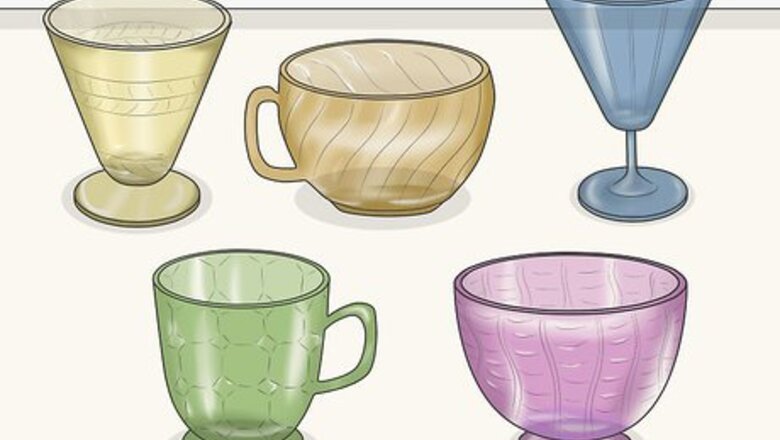
views
- Look for brightly colored, translucent glassware with delicate patterns. Common depression glass colors include amber, blue, pink, and green.
- Familiarize yourself with popular depression glass patterns so you can more easily identify depression glassware when you see it.
- Look for faint markings on the bottom or bubbles in the glass to make sure it's authentic. Reproduction glass is more "perfect" than real depression glass.
Defining Characteristics
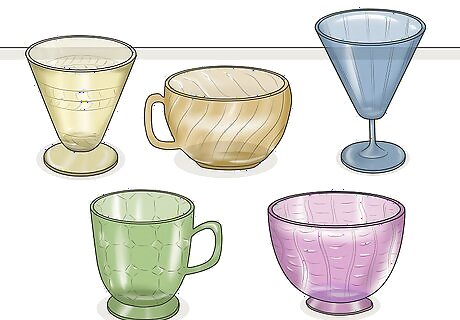
Search for colored glass that is amber, blue, green, or pink. Depression glass was usually translucent and made using bright colors, although it was occasionally colorless or opaque. This glassware was designed to be bold and stand out at a time when life was often drab and unexciting. So as you browse the antique store or estate sale, look for colorful pieces. Less common hues included canary yellow, ultramarine, jadeite (pale green), white (milk glass), delphite (opaque pale blue), red, black, amethyst, monax (pure white), and cobalt blue. Depression glass was sold in large quantities to businesses, who then gave it out for free to loyal customers or used it as prizes in oatmeal and cereal boxes. Once the economy recovered, many people threw their depression glass out or gave it away and replaced it with higher-quality glass.
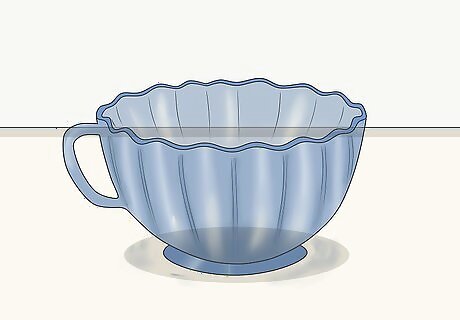
Check the glassware for intricate details. No matter the piece, depression glassware is usually patterned and often has geometric shapes and designs. Many depression glasses have geometric or floral designs etched into the cup. An opalescent trim is also a common characteristic of depression glassware. Depression glassware included dining sets, but there were also depression candlesticks, ashtrays, and cigarette boxes. Look around the edge of the glassware for an opalescent trim. The glass will change from colored to clear.
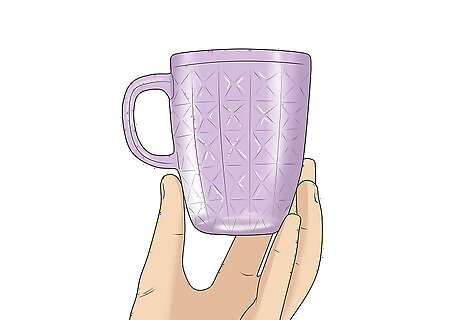
Make sure that the glass looks and feels thin. Depression glass was always made very thin due to the low cost of its production. Look at the edges of the glass, and check that the piece feels thin and delicate overall. Though depression glass can be quite pricey now, it was originally cheap to make. When the economy collapsed, glassmakers were forced to stop making high-quality crystal glass and mass-produce cheap, patterned glass instead. Due to the glassware being very thin, it is also susceptible to chipping. Check the piece for chips at the edges, as this is also indicative that it is not a reproduction piece.
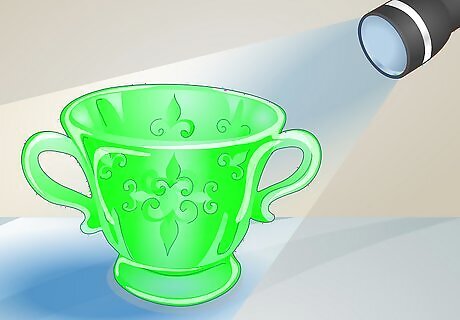
Use a UV light to see if the glass glows. Not all depression glass will glow, but some depression glass was made with uranium, which gave it a yellow or yellow-green hue and made it glow. Because green glass was more popular at the time than yellow or yellow-green, iron oxide was added to give it a deeper green hue. Uranium glass, also known as Vaseline glass, is especially valuable, so take a UV light with you to the next estate sale and see if the glassware glows! Vaseline glass refers to glass made primarily from 1830 through World War II, when there was a ban placed on uranium. The ban was lifted in 1959, and production recommenced. Some experts consider depression glass made with uranium to be Vaseline glass, but others say the iron oxide in depression glass makes it not actual Vaseline glass. EXPERT TIP Douglass Brown Douglass Brown Glassblowing Expert Douglass Brown is a Glassblowing Expert based in Half Moon Bay, California. He has over 25 years of experience as a glass artist, and is the owner and operator of 2 glass blowing studios in the San Francisco Bay Area, Half Moon Bay Art Glass and Mare Island Art Glass. Douglass believes in sharing hot glass experiences with anyone who wants to learn about the processes of blowing and sculpting glass. When not teaching, Douglass creates glass art that is a mix of his takes on nature and functional glassware. He has also created the Glass Troubadours, which is a mobile glass blowing studio that hosts parties, events, and visits craft shows. Douglass Brown Douglass Brown Glassblowing Expert Vaseline glass is often colored with uranium oxide, giving it a bright green hue and the ability to glow under UV light. The best way to identify Vaseline glass is by visually observing its lemon-lime color, which is quite bright and distinctive.
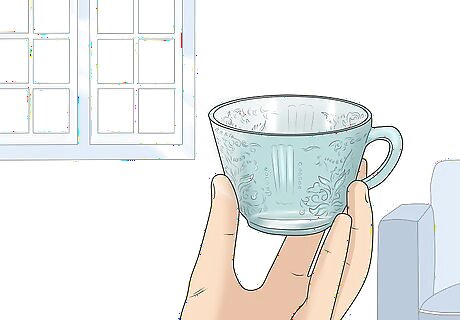
Familiarize yourself with popular patterns so you'll recognize them. Read books and articles online, and talk to depression glassware experts to learn the details of the common patterns. Look at the piece under a bright light and from all angles to see all of the small details. This will also help you to determine if the glassware is authentic. American Sweetheart is a very popular depression glass pattern. The glassware is soft pink or white-blue, and it is one of the most delicate patterns available. The American Sweetheart pattern is commonly found in depression glassware bowls, and the center is often decorated with intricate paisleys and curlicue designs. The Cameo pattern is another popular depression glass pattern. Most Cameo glassware is green, however, there are a very limited number of pink and yellow pieces available. Many cocktail and luncheon sets of depression glassware have the Cameo pattern, which looks like strings of beads stretching around each piece.
Signs of Authenticity
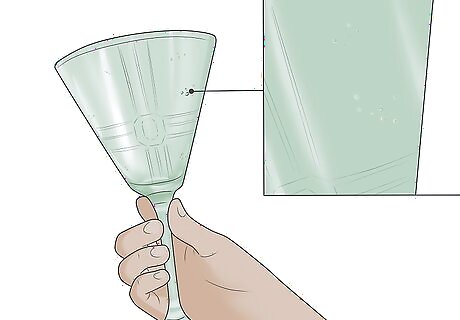
Look for tiny bubbles on the surface of the glass. Check the piece very closely, and look at it from all angles. If it is a real piece of depression glass, there will be a scattering of small bubbles. The bubbles are about the size of a full stop at the end of a sentence. Replica pieces of depression glass don’t have this distinguishing flaw.
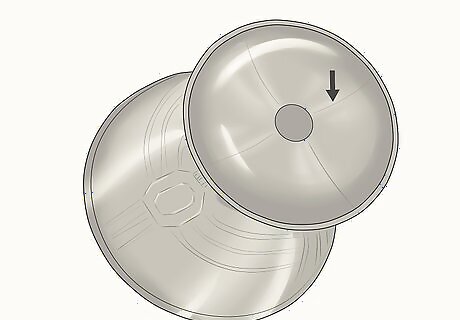
Check the base of the piece for small lines. Turn the piece upside down, and look closely at the base. Long, thin lines running in a similar direction indicate that the glass is true depression glassware. When the glassware was manufactured during the Depression, each piece would be dried while resting on straw. The thin lines show where the straw slightly molded the glass.
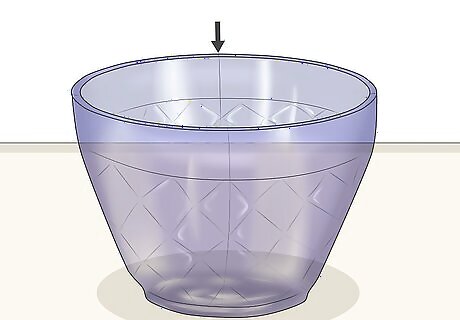
Find seam lines, especially around lid pieces of glassware. Check around the edges of the lid. Look for a slight, overlapping ridge on the glass. Reproduction pieces of depression glassware pieces don't have seam lines.
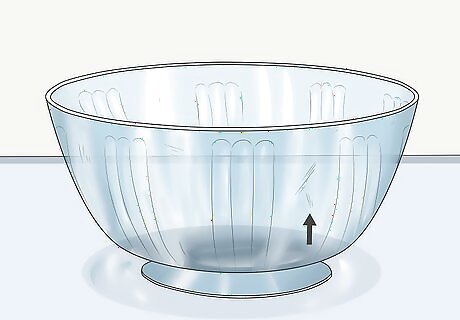
Search for scratches on the glassware. Some pieces of depression glassware are almost a century old, which means that it is normal for them to show signs of wear and tear. Depression glass was designed to be used every day during its time, so finding many scratches on the glassware is a good indication that it’s a real piece. Real depression glass is very thin and delicate, which means that it is prone to being scratched.
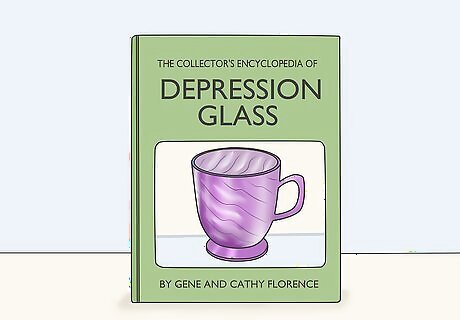
Use a reference book or website to identify the pattern. There are 92 different patterns recorded for depression glassware, and there usually isn't a logo or stamp on each piece to indicate the maker. Use either a reference book or website to guide you through the defining characteristics of each type, so that you can determine the pattern and the maker of your depression glassware. The Collector's Encyclopedia of Depression Glass by Gene and Cathy Florence and Kovels depression glass guide are great places to start if you want to identify depression glass.




















Comments
0 comment